As a new Naim dealer in summer 2013, we first encountered Naim NAC A5 speaker cable quite recently.
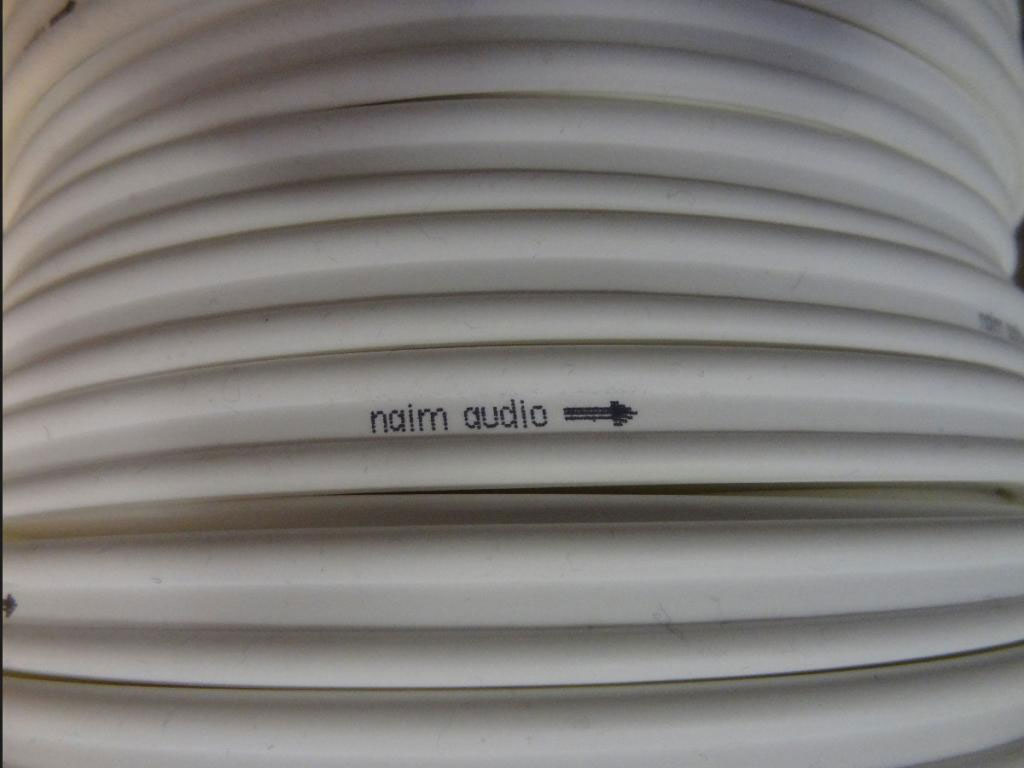 NAC A5 white, black also available
NAC A5 white, black also availableIt is highly regarded by Naim audiophiles and recommended for use with Naim Audio systems, as it provides the perfect combination of electrical resistance, capacitance and inductance to get the most musically satisfying result from Naim products, be it a Nait 5Si, Naim Uniti Nova or even the mighty NAP 250 power amp.
NAC A5 performs at it's best when terminated with Naim's own unique solderable twin banana plugs at the amplifier end of the cable. Good quality Chord 4mm single banana plugs and now the Chord Ohmic Plugs are favourite for the speaker end termination, and are attached with solder. Actually, in this case we are making a loudspeaker cable for connection to a Naim Ovator S-400 loudspeaker, which is why we are terminating the speaker cable at the loudspeaker end with Naim dual banana plugs.
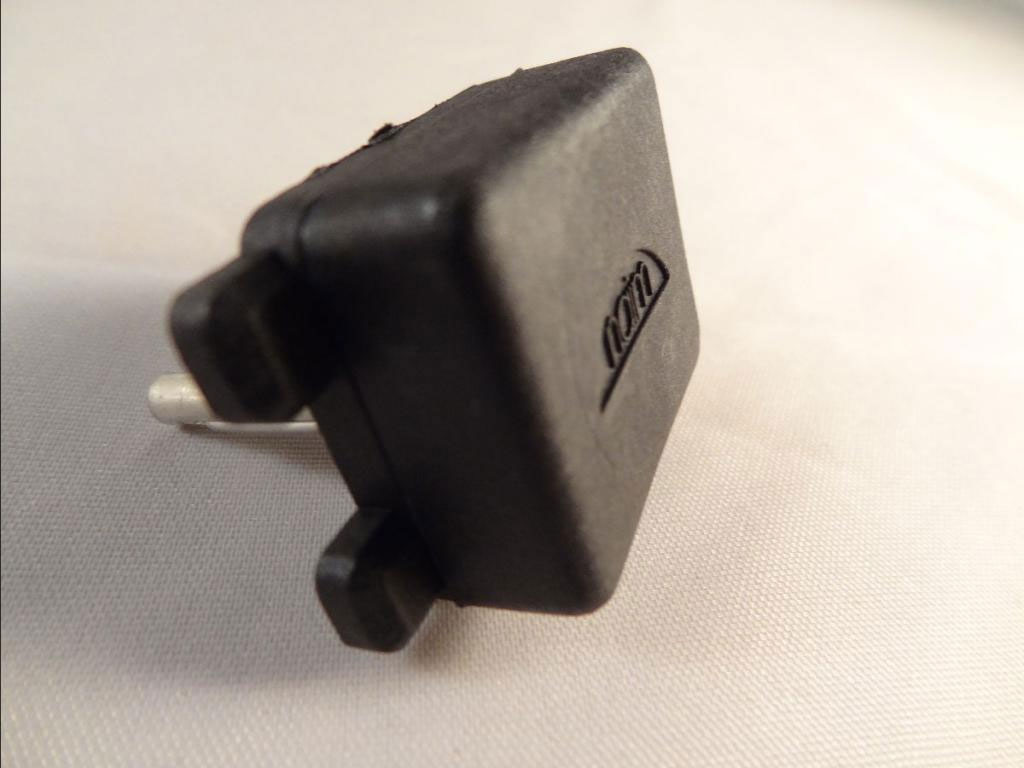 Naim dual banana plug
Naim dual banana plugOne of the more challenging aspects of the cable is neatly soldering the cores to the Naim twin banana plugs - so here we will detail the cable termination training we received from Naim themselves, so you DIY'ers out there can get a head start. NAC A5 is available with either a black or white insulation jacket to suit your taste or decor - it is also quite stiff and resistant to bending neatly, so you'll need to have patience when installing the finish cables, particularly of you want it to fit snugly to skirting boards.
Ideally you will need the following tools to get the job done with relative ease:-
- wire strippers
- cable cutters
- stanley knife
- miniature vice
- 'third hand' helping hand tool
- temperature controlled soldering iron (50W minimum)
- wet sponge
- 1mm diameter solder
- red and black heat shrink, 7mm diameter
- hot air gun
- spotlight
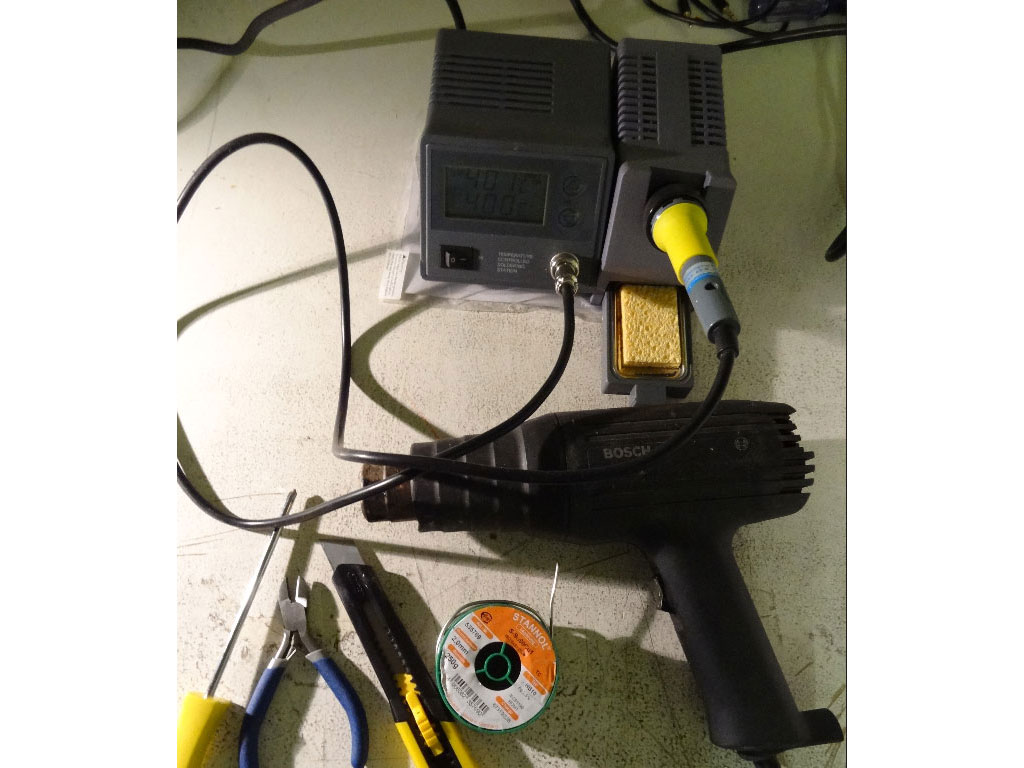 Essential tools for the job
Essential tools for the jobFirst start by measuring off the lengths of cable needed - ideally both runs should be the same length for a stereo system, to ensure best sound quality.
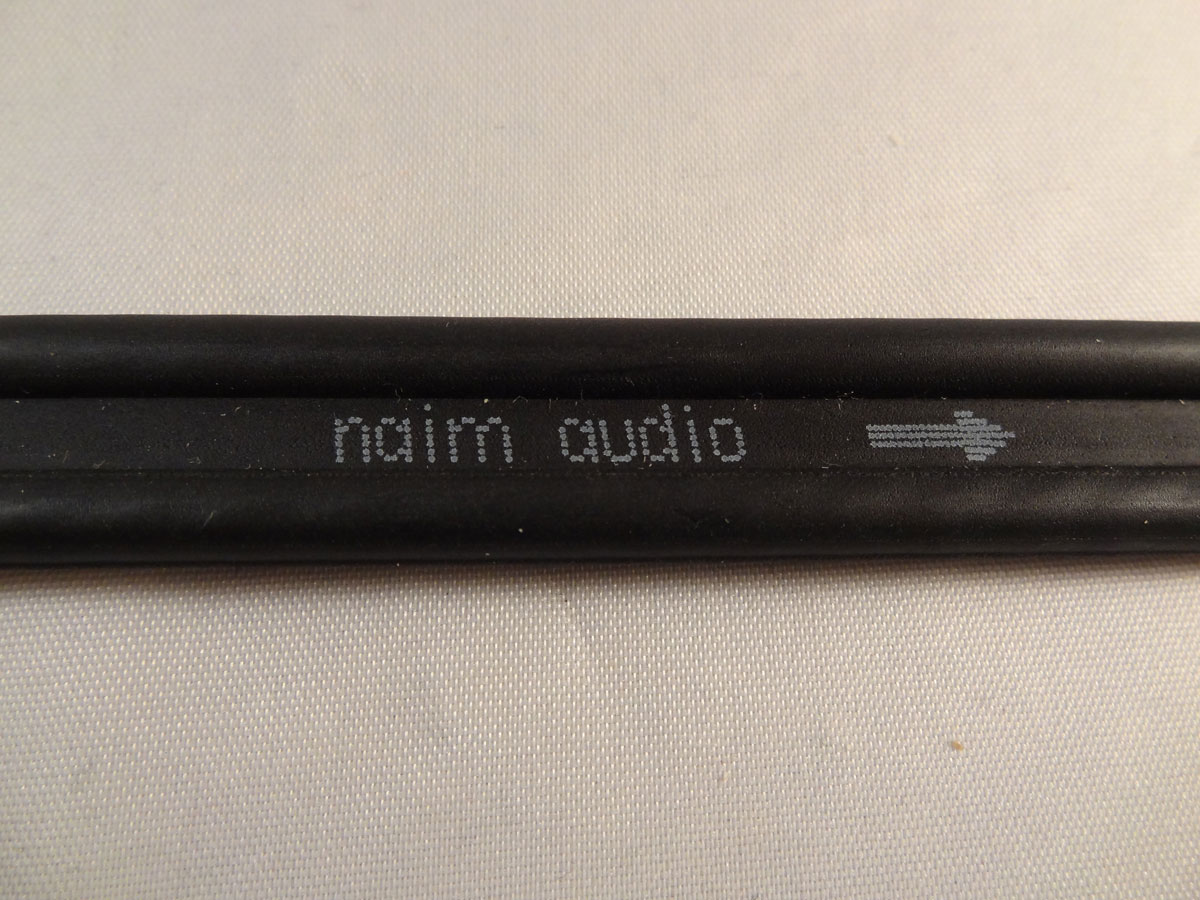 Naim NAC A5 is a direction sensitive cable - arrow points towards your speakers
Naim NAC A5 is a direction sensitive cable - arrow points towards your speakersNote also that NAC A5 is a directional cable, as indicated by the arrow printed on the insulation jacket - this arrow points to the loudspeaker end of the cable, hence the other end must be connected to your Naim amplifier/ streaming all-in-one system. So far, so good.
Firstly we will fit the Naim dual banana plugs, which will connect to all Naim amplifiers (exception NAP100).
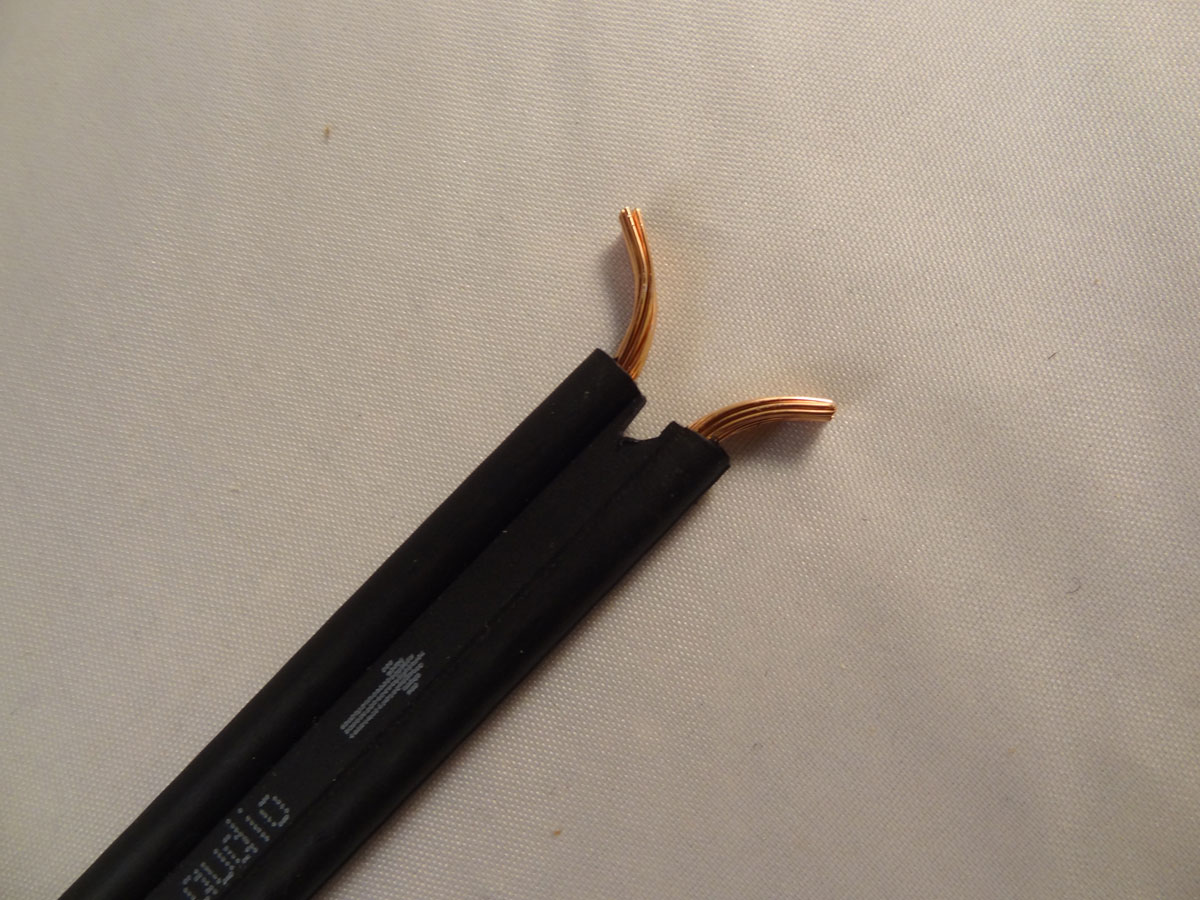 stripping NAC A5 ready for banana plug
stripping NAC A5 ready for banana plugTake one of the lengths of NAC A5 and cut out a 10mm piece of the insulation webbing between the two conductors, and strip the ends of each core by 10mm.
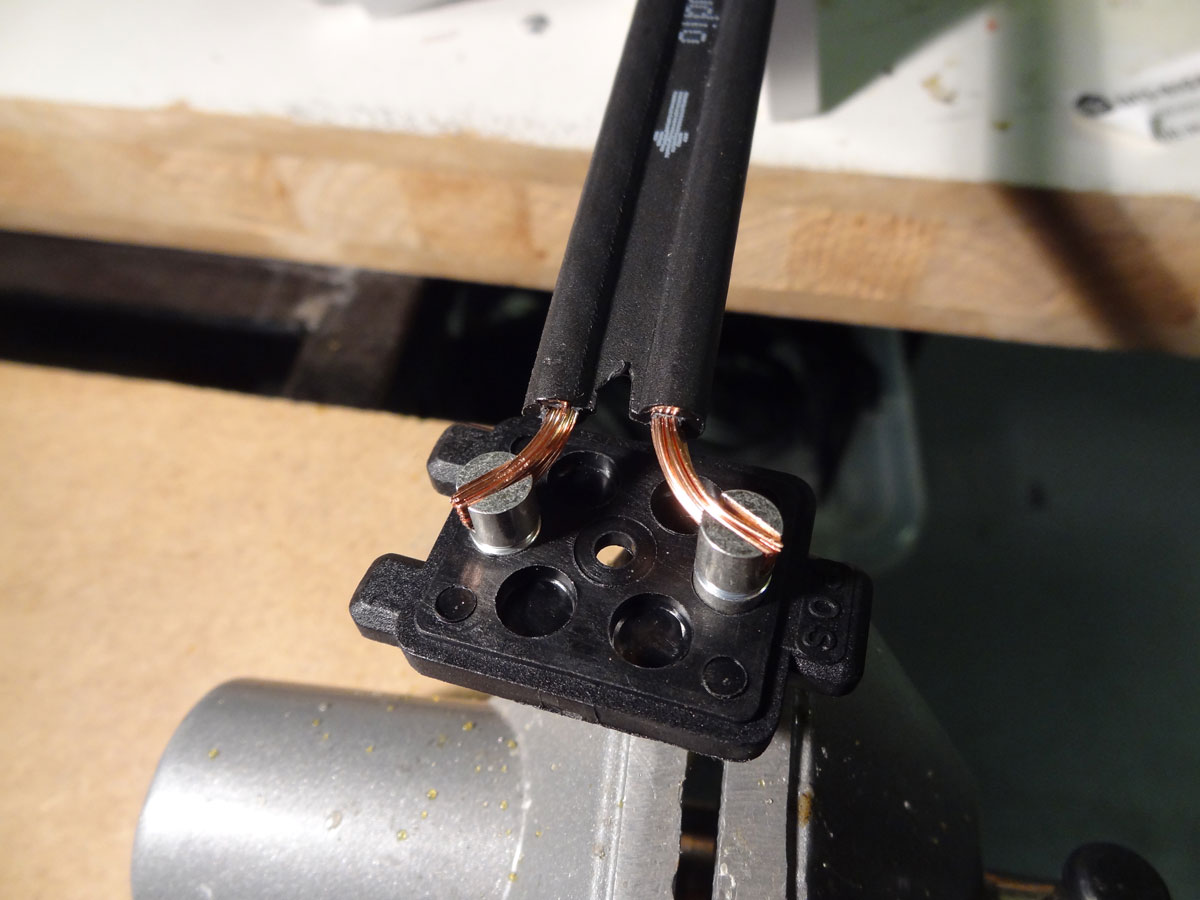 Hold a dual banana plug in a small vice as shown, orientating the slots of each banana plug diagonally as shown.
Hold a dual banana plug in a small vice as shown, orientating the slots of each banana plug diagonally as shown.
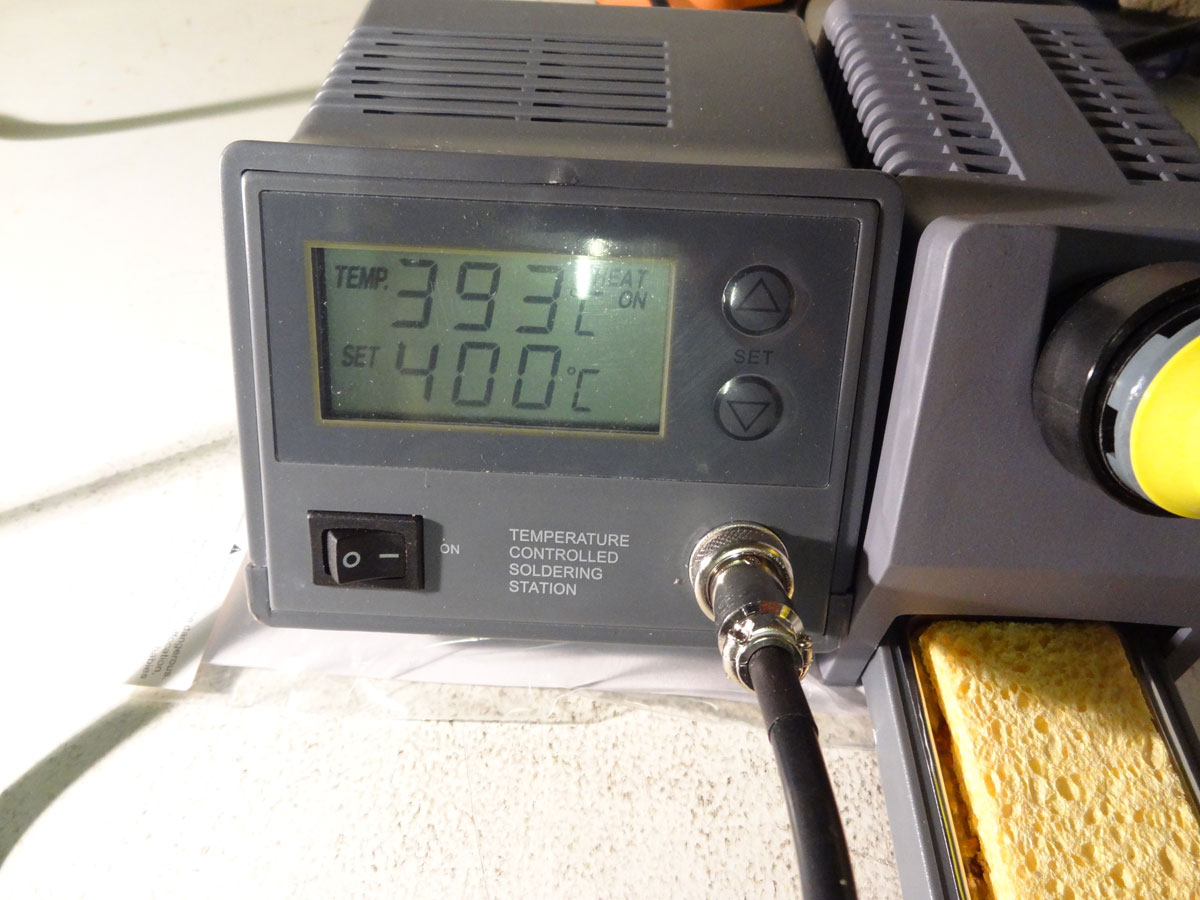 Set the temperature of the solder bit to 400 degrees C
Set the temperature of the solder bit to 400 degrees CWith a hot (approximately 400 deg C) tinned soldering iron bit, place the length of the bit against the bare -ve copper strands of the NAC A5 and the slot in the 4mm terminal of the Naim dual banana plug, and feed in a good amount of solder and wait for it to flow through the joint.
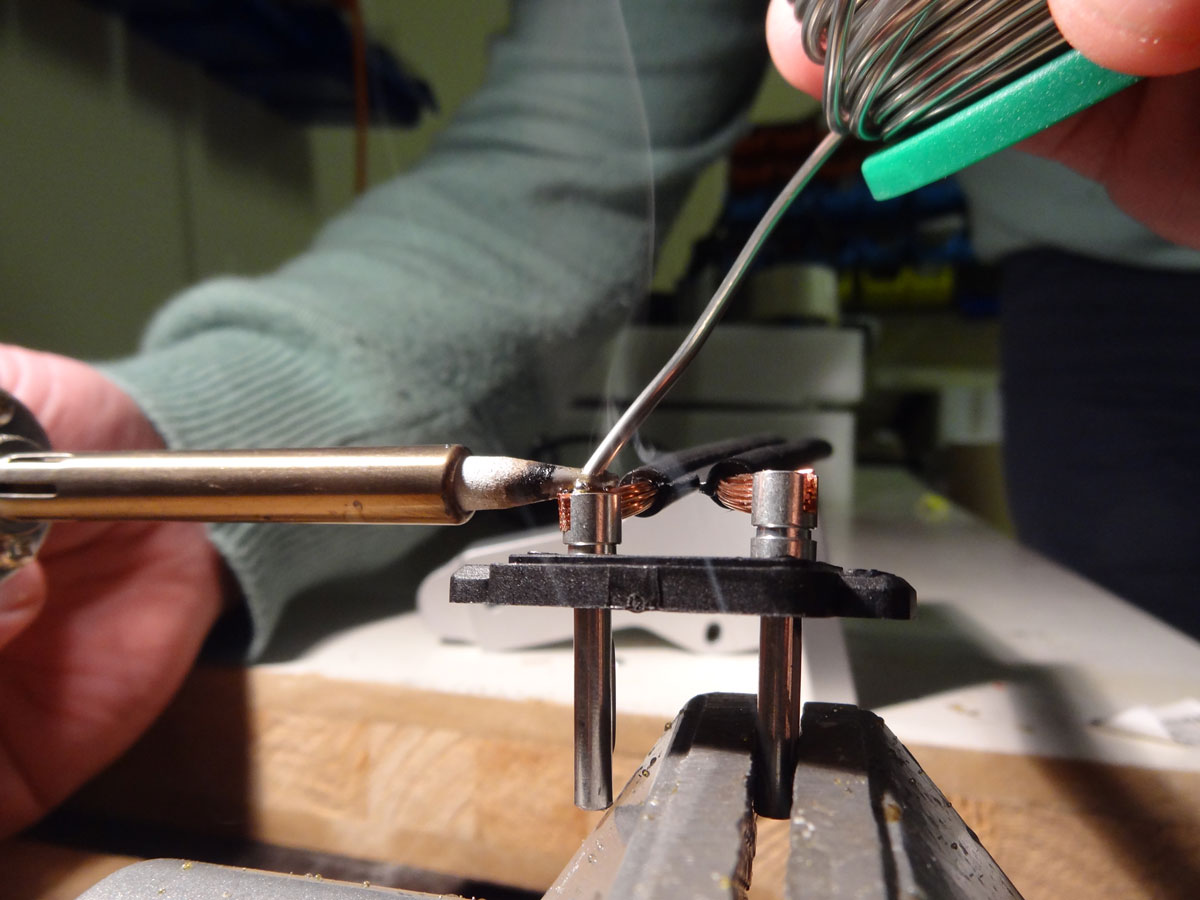 Soldering the NAC A5 copper strands to the dual banana plug
Soldering the NAC A5 copper strands to the dual banana plugRepeat this with the +ve strands of the cable.
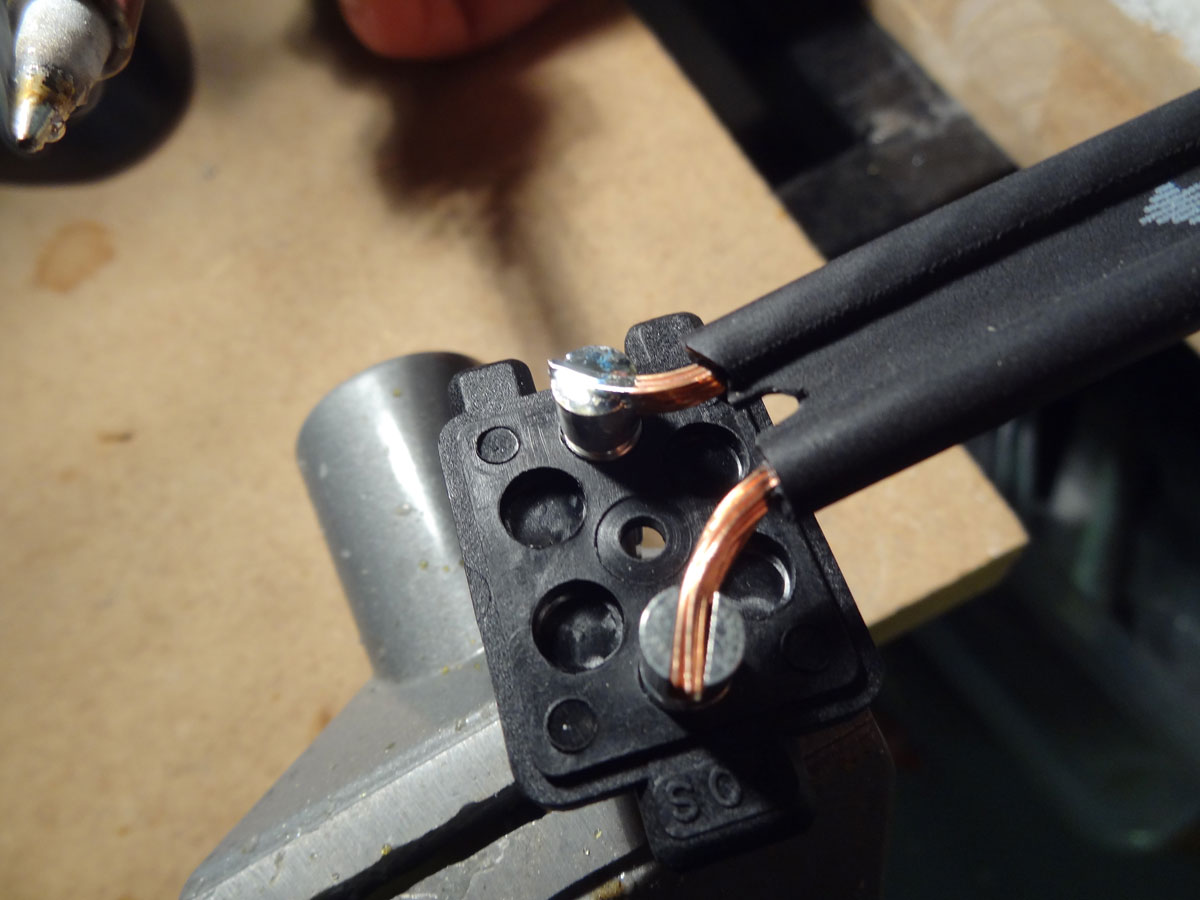 Soldered joint should be shiney and free of loose copper strands
Soldered joint should be shiney and free of loose copper strandsForm the insulated cables exiting the dual banana plug so that they pass cleanly through the exit gap in the plug.
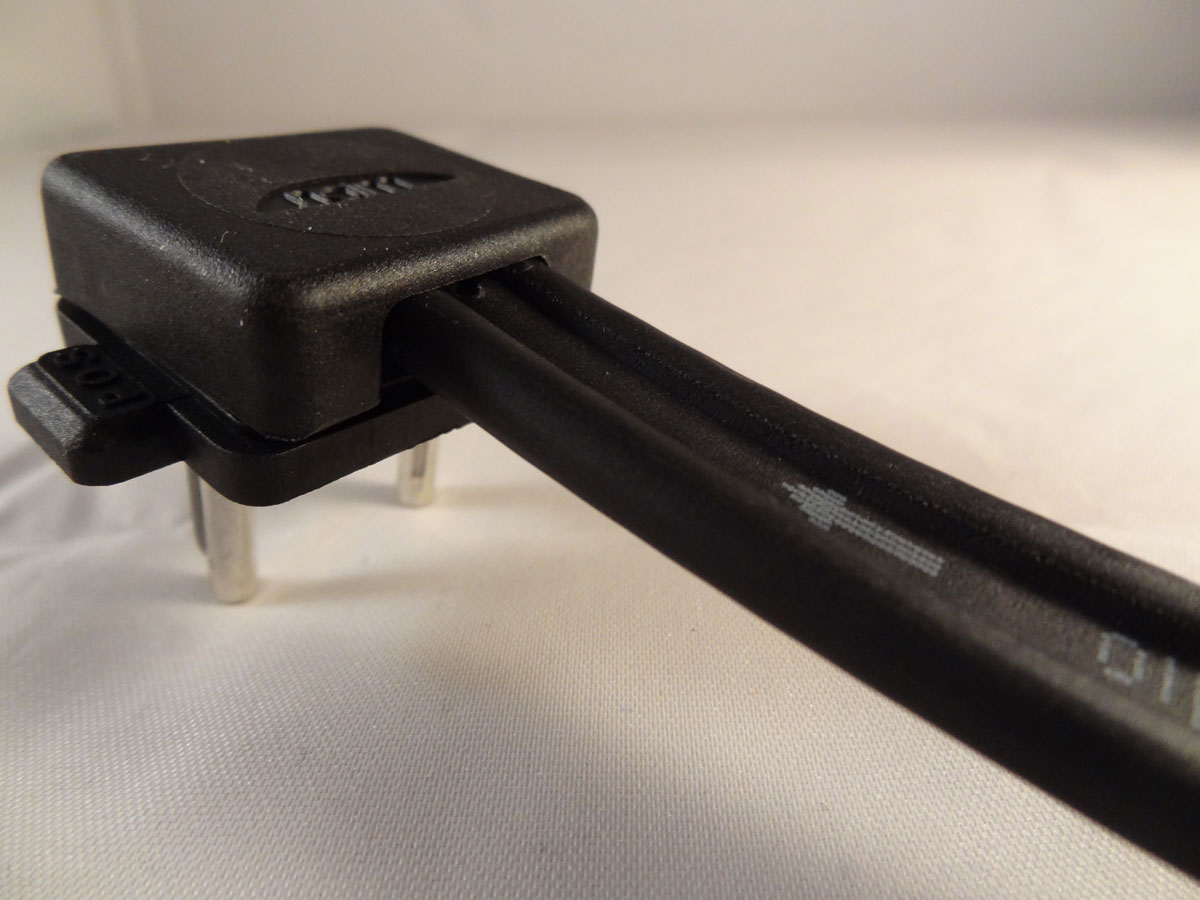 Cable is a snug fit once the lid of the dual banana plug is screwed in place.
Cable is a snug fit once the lid of the dual banana plug is screwed in place.Now screw down the insulating cover over your soldered terminations - there should be no bending of the cover when fully screwed down.
If you are using Naim loudspeakers, you can fit the Naim dual banana plugs to the speaker end of the NACA5 cable.
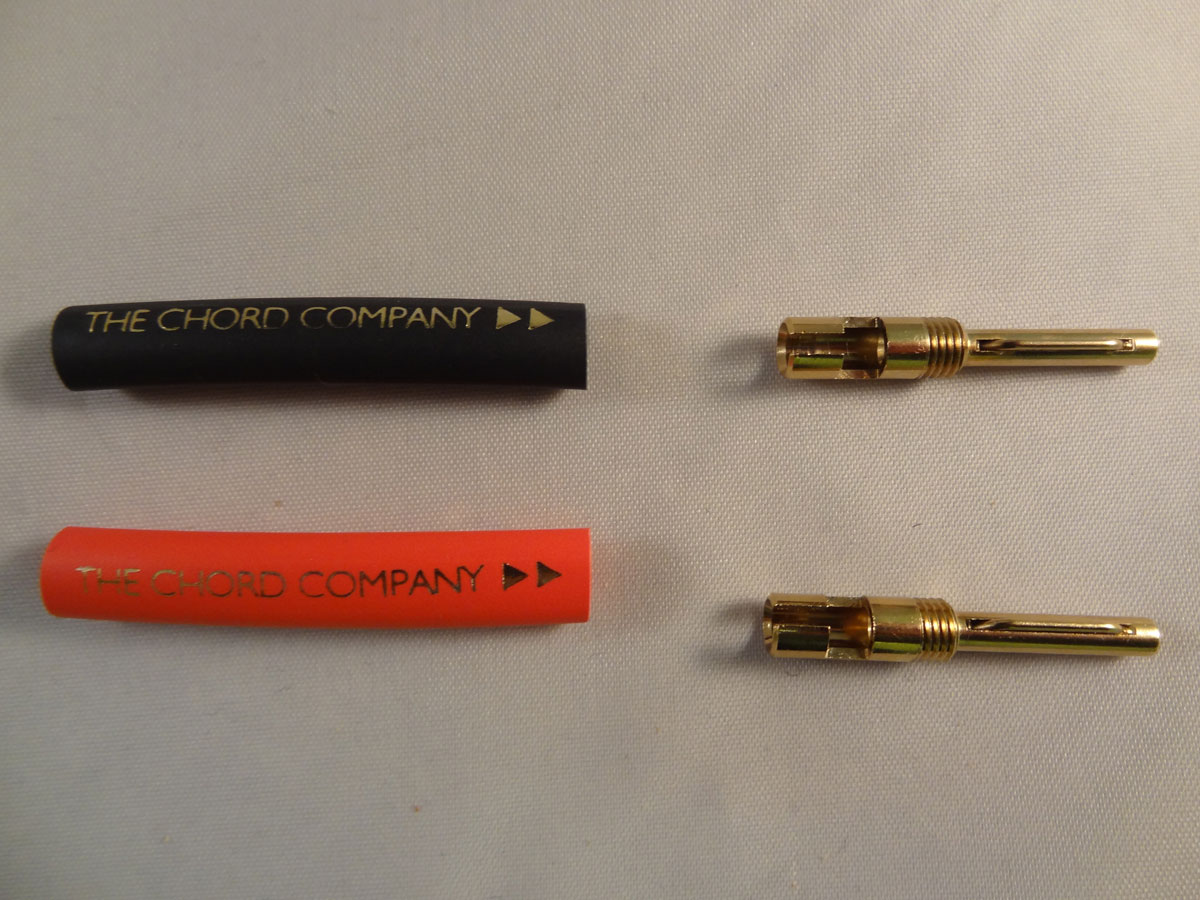 However, if you are using 3rd party loudspeakers then standard gold plated 4mm Chord banana plugs are the ideal solution.
However, if you are using 3rd party loudspeakers then standard gold plated 4mm Chord banana plugs are the ideal solution.
To fit the Chord banana plugs, again hold the NAC A5 cable gently in a vice, then solder a 4mm Chord banana plug on to the -ve and +ve standed cable - then pass a red heat shrink over the +ve shoulder of the banana plug, and a black heatshrink over the -ve shoulder of the banana plug. Using a heat gun, carefully shrink down the heatshrink until it is tight and neat.
 Orientation of Naim dual banana plugs with NAC A5 cable and rear or Naim power amp - note POS on outside of each plug
Orientation of Naim dual banana plugs with NAC A5 cable and rear or Naim power amp - note POS on outside of each plugHere is a (rough and ready!) cable/ plug orientation diagram we sketched out on the workshop bench to hep us remember the correct orientation of Naim dual banana plugs and NAC A5 speaker cable when they are plugged into a Naim power amp - pretty it isn't - useful it IS!
For best sonic results, Naim NAC A5 needs plenty of burn in, best to let it run audio between your amplifier and speakers for 48 hours before serious listening begins.